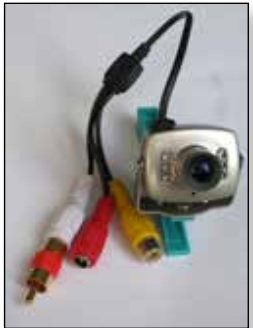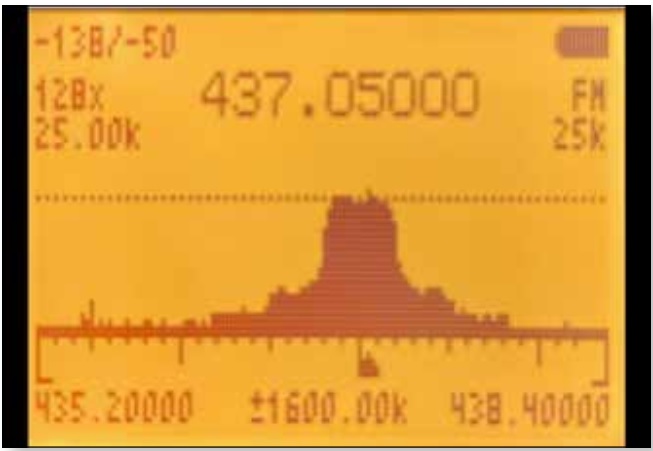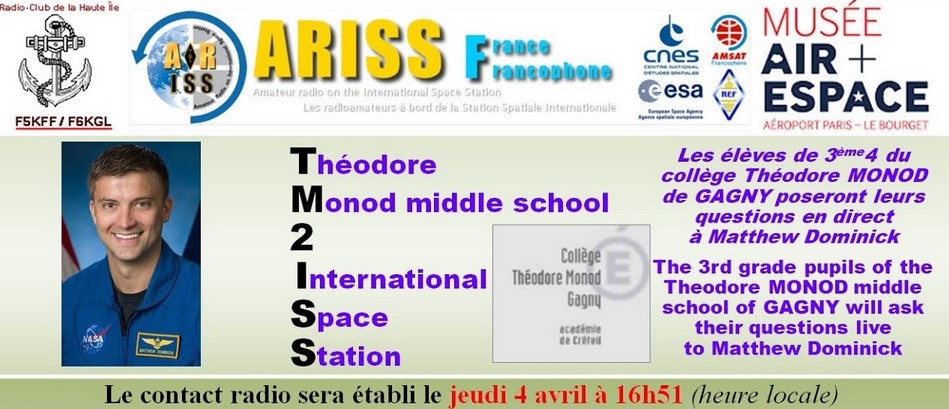Billige Videokameras mit schlechter Farbwiedergabe
Haben Sie schon einmal eine solche billige CCTV-Kamera gekauft oder haben Sie vor, dies zu tun? Die Bildqualität ist vielleicht etwas enttäuschend. Das liegt daran, dass sie auch für die Verwendung mit Infrarotlicht gedacht sind. Das zu überwachende Objekt wird von einer Reihe von Infrarot-LEDs beleuchtet, und die Kamera muss natürlich in der Lage sein, dieses IR-Licht zu sehen.

Meine billige IR-Kamera enthält sogar ein Mikrofon (die Klemme ist eine Wäscheklammer). Sie ist nützlich, wenn man etwas im Dunkeln sehen will, z.B. beim Wandern am Abend. Wenn es aber Tageslicht ist, sind die Farben blass und stehen in keinem richtigen Verhältnis zueinander. Dieses Problem lässt sich jedoch leicht lösen, indem man einen IR-Filter einsetzt. Ein solcher IR-Filter sieht aus wie ein sehr helles grün/türkisfarbenes Glas.

IR-Filterglas mit Rahmen, ausgeschlachtet aus einer defekten 8-mm-Videokamera. Wenn man das IR-Filterglas vor das Objektiv hält, ist die Verbesserung sofort zu sehen.
Falls Sie die IR-Kamera im Internet bestellen, können Sie auch gleich ein IR-Filterglas mitbestellen. Ich habe sehr günstige runde und rechteckige Gläser in verschiedenen Größen gesehen, die von den bekannten chinesischen Webshops angeboten werden. Der Nachteil des IR-Filters ist, dass man mit den IR-LEDs nicht mehr im Dunkeln sehen kann. Da die LEDs nun ihre Funktion verloren haben, könnten sie von der Stromquelle getrennt werden, um den Energieverbrauch zu senken, was besonders bei einer mobilen Station willkommen ist. Eine solche billige Kamera kann mit der mobilen Station mitgeführt werden, so dass man im Einsatz nie feststellen muss, dass man eine Videoquelle vergessen hat.
Chris van den Berg, PA3CRX
Der Bandscanner des armen Mannes
Viele Leute, darunter auch ich, haben vor einiger Zeit eines der sehr billigen Quansheng UV-K5(8) Dualband-Funkgeräte (die Version mit dem orangefarbenen Bildschirm) gekauft. Es ist ein gut gebautes 2m/70cm-Handfunkgerät, das zwar nicht in der Liga der Icom- oder Yaesu-Funkgeräte spielt, aber dennoch eine vernünftige Leistung bietet – nun, man bekommt, wofür man bezahlt.
Ein Teil der Anziehungskraft – abgesehen von den £10 inklusive Lieferung – besteht darin, dass es sehr einfach ist, neue Firmware zu installieren – einfach mit dem Chrome-Browser und einem Baofeng UV-5R Programmierkabel. Die wahrscheinlich nützlichste Version der Firmware ist die von EGZUMER und hier erhältlich:
https://github.com/egzumer/uv-k5-firmware-custom/releases
Das auf der GitHub-Seite beschriebene Update vom Browser aus macht den ganzen Prozess einfach – obwohl Sie natürlich jede Garantie auf das Funkgerät aufheben und dies auf eigenes Risiko tun. Von besonderem Interesse ist die Spektrum-Analysator-Option, indem Sie zuerst F auf der Tastatur des Funkgeräts drücken und dann 5. Das Spektrum erscheint auf der Mittenfrequenz, die Sie auf dem aktiven VFO eingestellt haben. Sie können die Parameter des Scans über die Tastatur des Funkgeräts ändern, siehe Anweisungen unter dem Link
https://github.com/egzumer/uv-k5-firmware-custom/wiki/Spectrumanalyzer

Mit den richtigen Einstellungen ist es recht empfindlich für ein DATV-Signal auf 2 m oder 70 cm. Mit der erweiterten Software deckt das Funkgerät außerdem 10 m, 50 MHz, 70 MHz und einen Teil von 23 cm ab – obwohl die Empfindlichkeit außerhalb der Spezifikation natürlich nicht so gut ist und man auf den Berggipfeln andere unerwünschte Artefakte finden kann. Es ist alles nur ein bisschen Spaß und keine Qualitätssoftware wie der „Portsdown Band Viewer“ (BATC), aber es könnte Ihnen helfen, das kleine bisschen DX von der Station aus zu finden.
Quelle: CQ-TV 283

